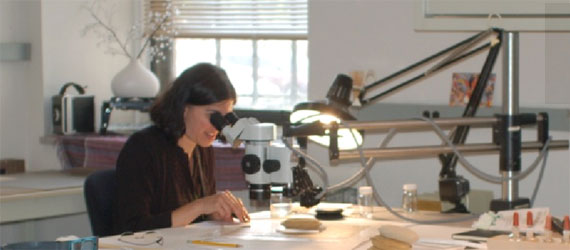
The Paper & Photographs section at the Freer and Sackler Galleries is dedicated to the museums’ paper-based materials. Examples include illustrated and illuminated manuscripts from Iran and the Arab world; ninth–nineteenth century Korans from Iran, Turkey, and the Arab world; opaque watercolor paintings from India; etchings, pastels, and watercolors by Whistler and other American artists; and contemporary photography.
In the artworks mentioned above, both the media and the paper itself can be fragile and subject to deterioration due to exposure to light and pollution, poor-quality matting and framing materials, improper handling or storage, or environments that are too hot or humid. Art on paper can only be displayed for limited periods of time and must be rotated to minimize the potentially damaging effects of light, temperature, and relative humidity. One of the main objectives in paper conservation is the examination and treatment of such works to ready them for rotation in the galleries. Typical conservation treatments include surface cleaning to remove harmful particulate matter, removal of acidic tapes and mounting materials, reduction of disfiguring stains, repairing tears, and flattening distortions. Every piece is examined and assessed before treatment, and is documented in writing and in photographs.
The Paper & Photographs Conservation lab also undertakes surveys to give a general assessment of collections, reviews artworks being considered for acquisition and potential loan, and makes recommendations about appropriate materials for storage and display. In order to educate others about paper & photographs conservation, the conservators often make presentations to staff and visitors, contribute at professional conferences, and train volunteers and interns.
News
Thanks to a generous grant from the Smithsonian Women’s Committee, the paper conservation lab is purchasing an aerosol generating system. This tool is purpose-made for the non-contact consolidation of powdery, cracked, or flaking media. A quartz diaphragm vibrates at an ultrasonic frequency to turn a liquid adhesive into a mist of fine droplets. These droplets can penetrate insecure areas of paint to consolidate them without forming a shiny film on the surface. This tool will be used extensively to preserve the Islamic and Indian miniature paintings in the Freer|Sackler collections.





